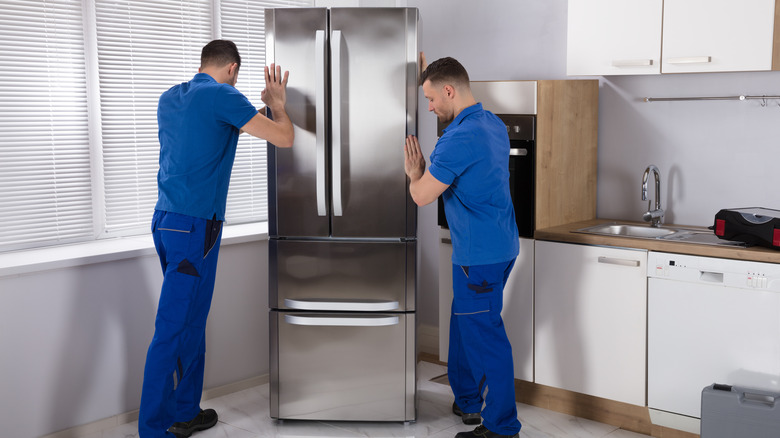Where You Place Your Fridge Could Be Costing You Money
It's easy to overlook the impact that the placement of our fridges has on their performance. While they quietly do their job, we tend to forget about the crucial role of the gap between the fridge and the wall in terms of energy efficiency and operational effectiveness. The strategic positioning of your refrigerator can make a significant difference in your energy consumption and overall efficiency. Proper placement is a science, and it involves more than just intuition. The rear, top, and side clearance are all crucial factors that affect your fridge's performance.
By allowing between one to two inches of space at the back, one-half inch to one inch of space at the top, and one-half inch to one inch of clearance on the sides, you can create the necessary breathing room to ensure that your fridge's cooling mechanism functions optimally. Understanding these precise measurements may seem like a small change, but it can yield remarkable long-term rewards. By making minor adjustments to your refrigerator's surroundings, you can create a more energy-efficient kitchen that translates into tangible savings on your energy expenses.
Measuring and moving your refrigerator
To start, measure the depth of your kitchen counter to make sure the refrigerator does not extend beyond it. Also, consider any overhead cabinets above where you plan to place the fridge. Measure the space between the bottom of the cabinet and the top of the refrigerator to make sure there is enough space above the refrigerator for ventilation. Measure the distance between the back wall and the refrigerator's placement, leaving a gap of at least one to two inches. It's also important to measure the width of the intended refrigerator location, allowing for a half-inch to an inch of clearance on each side. Be sure to account for things like baseboards or countertops that could take up space in certain spots.
When moving the refrigerator, lift it with care to prevent strain or injury. Gently place the appliance in its designated spot, ensuring it's aligned with your measurements. As you position the refrigerator, leave the specified gaps behind, above, and on the sides of the appliance. Use a level to ensure that the fridge is sitting evenly. An uneven placement can affect its performance and longevity. Once the refrigerator is in place, double-check that the clearances are adequate.
Maximize your fridge's performance
Giving your refrigerator enough space helps to keep it working well now and in the future based on how cooling systems and thermodynamics work. By following the recommended clearances for your refrigerator, you allow for good airflow. This is very important because the fridge moves heat from inside to outside. The clearances make sure that the heat from this process can be released properly. If the heat can't escape, the cooling system will have to work harder and use more energy.
Maintaining these spaces around your refrigerator can prevent heat buildup, which can strain the compressor and other components. This, in turn, translates to energy savings as the refrigerator operates more efficiently and experiences less wear and tear. Ultimately, a well-ventilated refrigerator is less likely to suffer from performance issues and breakdowns, which can extend its lifespan. Be sure to clean behind your refrigerator and regularly remove dust and debris from the top and sides to improve your refrigerator's performance.

